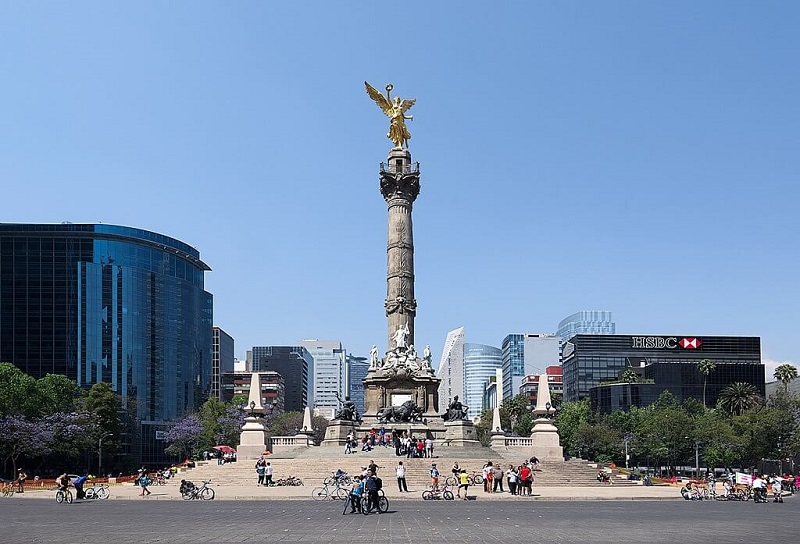ISABEL RUBIO ARROYO | Tungsteno
The Angel of Independence is one of the most representative monuments in the Mexican capital. This bronze statue represents Nike, the Greek goddess of victory. There are some hypotheses as to who the model was, from the secretary of a former president of Mexico to a seamstress.
We take a look at the history of this monument, which was restored after being badly damaged by an earthquake in 1957, and has been the scene of political demonstrations, military parades and patriotic celebrations.
The most representative symbol of Mexico City
"If you ask the people of Mexico City what symbol best represents the city, nine out of ten will say the Angel," says the Mexico City government, noting that the sculpture is officially known as the Monumento a la Independencia (Monument to Independence). The project was designed and built by architect Antonio Rivas Mercado. This iconic monument was inaugurated in 1910 by Porfirio Díaz, then president of Mexico, to commemorate the centenary of the beginning of Mexico’s War of Independence.
Since 1925, the monument has housed the remains of the 14 heroes of the War of Independence. They are Miguel Hidalgo y Costilla, Ignacio Allende, Juan Aldama, José Mariano Jiménez, José María Morelos y Pavón, Pedro Moreno, Víctor Rosales, Francisco Xavier Mina, Guadalupe Victoria, Vicente Guerrero, Andrés Quintana Roo, Nicolás Bravo, Mariano Matamoros and Leona Vicario. This final person was a "journalist and supporter of the rebels" and is the only woman buried in the mausoleum.
The Angel of Independence is one of the most representative symbols of Mexico. Credit: Intangible Productions
A seven-tonne Greek goddess
At the base of the column there is a sculpture of a boy leading a gigantic, laureled lion, symbolising the Mexican people "strong during war and docile during peace". There is also a bronze figure at each vertex. They represent law, justice, war and peace. The 36-metre high column conceals a 200-step staircase leading to a viewing platform. A statue 6.7 metres high and weighing over seven tonnes crowns the column. This figure, representing the Greek goddess Nike, was designed and cast by the Franco-Italian artist Enrique Alciati.
There are two hypotheses as to who the model for the sculpture was. According to one, it was a secretary of President Porfirio Díaz called Ana María Mazadiego Fernández. Another theory is that the model for the face and legs of the Angel was Ernesta Robles, a 23-year-old seamstress who was said to love ballroom dancing and who apparently caught Alciati’s eye one night. Although these hypotheses have been widely circulated on the Internet, neither of them has yet been confirmed.
The Monument to Independence has been the site of celebrations of historical events. Credit: Mexico City Government
From earthquakes to historical events
The Angel has suffered several earthquakes. In one that occurred on 28 July 1957, the sculpture fell to the ground and broke into several pieces. The original head of the figure is now in the Historical Archive of Mexico City, in the Palace of the Counts of Heras - Soto. The restoration of the monument took more than a year. The monument was also damaged by other earthquakes in 1985 and 2017.
Nevertheless, it still stands today, and over time has become the starting point for major protests and marches, as well as many annual parades. It has also been the scene of numerous triumphs for the Mexican national football team, Olympic athletes and even Leo DiCaprio winning an Oscar. And that's not all. The Angel is also visited by millions of tourists who come every year to see what is arguably Mexico City's most iconic monument.
Tungsteno is a journalism laboratory to scan the essence of innovation.
